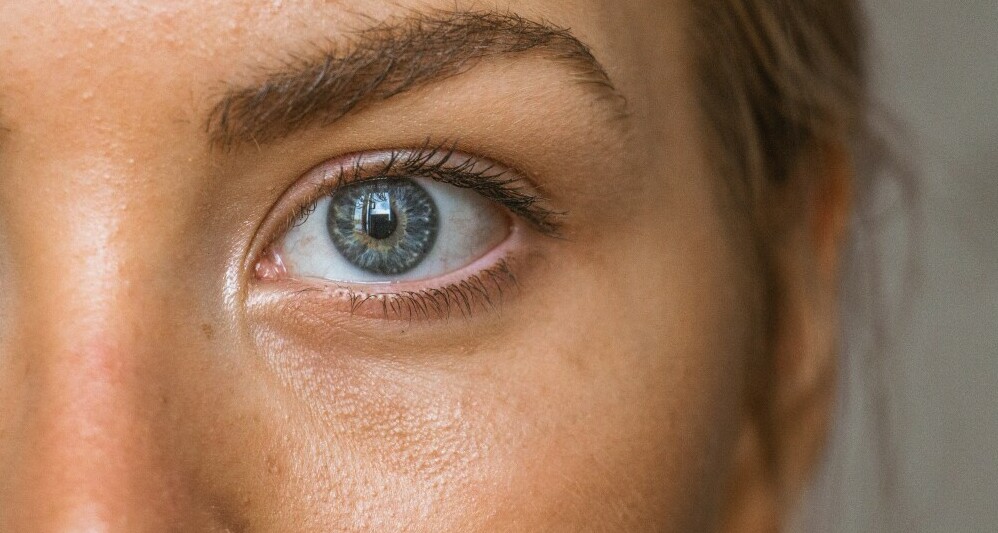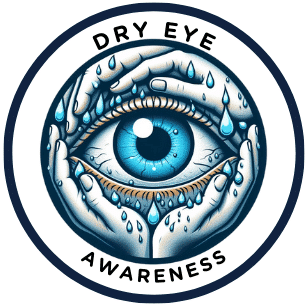
Dry eye syndrome is more than just an occasional annoyance; it’s a condition that affects your quality of life, limiting your daily activities and leaving you in search of relief. At its core, this syndrome involves a dysfunction in the quantity or quality of tears — the lubrication designed to keep your eyes comfortable and vision clear.
You might recognize the symptoms: a gritty sense as if there’s sand in your eyes, a stinging or burning feeling, and ironically, watery eyes as your body attempts to compensate for the dryness. Some people experience blurred vision or fatigue from the effort it takes just to keep their eyes open comfortably.
Daily habits and your surroundings can have a more significant effect on your eye health than you might anticipate. Long hours in front of computer screens, exposure to air conditioning or heating, and even long periods without blinking can all play havoc with your tear film. Conversely, certain lifestyle changes can be a beacon of hope for those suffering from this syndrome. Beyond just the discomfort, it’s crucial to address these factors early on, as prolonged dry eye can lead to more severe issues like infections or damage to the eye’s surface.
Moving into the next section, I’ll share with you actionable lifestyle tips that can manage and even mitigate the symptoms of dry eye, allowing you to reclaim the comfort and clarity that this condition has clouded.
Lifestyle Tips for Managing Dry Eye: Simple Adjustments for Comfort

If you’re grappling with the discomfort of dry eye, you’re not alone. Everyday choices can either contribute to the irritation or offer relief. Here, I guide you through a series of practical adjustments direly needed for the comfort of your eyes.
An often-overlooked culprit of dry eyes is screen time. Computers, tablets, smartphones, all demand our constant attention, but they also require us to blink less, leading to faster tear evaporation. An effective strategy to counter this is the ’20-20-20′ rule: every 20 minutes, take a 20-second break and focus on something 20 feet away. This simple habit can help keep your eyes lubricated and reduce fatigue.
However, what’s outside the screen matters too. Air conditioning and heating can create a dry environment, sapping the moisture from your eyes. I recommend using humidifiers to add moisture to your indoor air, creating a more eye-friendly environment.
Hydration isn’t just about the air around you; it starts with your body. Dehydration directly affects your tears, so it’s crucial to drink plenty of water throughout the day. Try to limit drinks that can dehydrate, like those with alcohol or caffeine, in favor of water, herbal teas, or dilute, non-sugary drinks.
And what about when you step outside? Don’t forget eye protection. Sunglasses aren’t just a fashion statement; they act as a barrier against wind and debris, which can be particularly harsh on sensitive eyes. By choosing sunglasses with 100% UV protection, you can shield your eyes from harmful rays that can exacerbate dry eye symptoms.
Lastly, your diet plays an essential role. Foods rich in omega-3 fatty acids, like flax seeds, chia seeds, and fatty fish, can help improve tear quality. Similarly, antioxidants found in colorful fruits and vegetables can support eye health. Together, these dietary choices form an integral part of dry eye management.
Guarding Against Screen Strain and Environmental Factors

If you’re dealing with dry eye syndrome, you know the discomfort that comes with it. Pain, blurriness, and a persistent sensation of something being in your eyes are just a few symptoms that can disrupt your day. It’s not all doom and gloom, though. Simple changes in your environment and screen habits can make a world of difference.
Take your digital devices, for instance. With so much of my work and social life tethered to screens, I’ve learned that it’s crucial to manage screen time. It’s time to get REAL with the 20-20-20 rule: every 20 minutes, shift your gaze to something 20 feet away, for at least 20 seconds. Trust me, your eyes will thank you for the break. And when you can’t avoid extended screen use, consider blue light filters or anti-glare screens to reduce eye strain.
Your environment plays a huge role too. Air conditioning and heating can make an office feel comfortable, but they can also dry out your eyes. A good-quality humidifier can add the necessary moisture back into the air. On sunny days, or even when it’s overcast, wearing sunglasses is a smart move. They shield your eyes from UV rays and prevent squinting, which can save you from a whole lot of eye strain and irritation.
But what about when you’re indoors? Lighting also matters. If you’re straining to see because of dim lighting, or you’re getting blinded by lights that are too harsh, adjust them. The ideal is soft, natural light. It reduces glare and makes it easier for your eyes to stay focused without strain.
While adjusting these factors can offer immediate relief, they’re part of a puzzle. Next, I’ll dive into how certain dietary choices – think a splash of olive oil, a handful of leafy greens – can lay the groundwork for long-term eye health.
Nutritional Considerations: A Mediterranean Approach to Dry Eye Relief

If I deal with dry eye syndrome, diet is a crucial element I scrutinize. Research has repeatedly shown that what I eat can have a profound impact on my well-being, including the health of my eyes. A diet that’s become synonymous with numerous health benefits is the Mediterranean diet. This eating pattern is abundant in fruits, vegetables, whole grains, and particularly, sources of omega-3 fatty acids such as fish, which are known to support eye health.
When I focus on following a Mediterranean diet, I incorporate foods high in omega-3 fatty acids, like salmon, mackerel, and sardines. These nutrients are pivotal for maintaining healthy cell membranes and may help improve the oil film produced by the glands in my eyes. This can be an effective way to improve tear quality. Antioxidants found in colorful fruits and vegetables, like carrots, spinach, and berries, can protect my eyes from oxidative stress, which is another factor involved in dry eye syndrome.
The Mediterranean diet isn’t just about individual foods; it’s the pattern of eating that matters. It emphasizes the use of olive oil over butter, leans toward more plant-based meals, and suggests low consumption of red meat. It’s about a dietary diversity that ensures I get a broad range of nutrients vital for eye health and overall well-being.
Hydration is another significant aspect of the diet that can’t be overlooked if I wish to manage dry eye symptoms. Water is essential for producing tears, so ensuring I drink enough fluids throughout the day is paramount.
Embracing the Mediterranean diet doesn’t only help alleviate symptoms related to dry eye syndrome. It’s also associated with better heart health and reduced risk for certain chronic diseases. And that’s something I usually keep in mind—it’s not only my eyes that benefit but my entire body.
Comprehensive Lifestyle Modification for Chronic Dry Eye Management
It’s clear that tackling chronic dry eye disease transcends simple remedies. What I offer here is a holistic approach, where lifestyle plays a pivotal role alongside medical treatments. It’s not just about what you put in your eyes, but it’s also about what you feed your body, how you protect your eyes, and the overall way you live.
Revamping your sleep habits, scrutinizing the medications you take for potential dry eye side effects, and making informed decisions about contact lens use can make a significant difference. Regular eye exams remain crucial, as these checkups can guide the necessary adjustments to treatment plans to lessen dry eye discomfort.
Remember, these lifestyle modifications aren’t necessarily quick fixes but are essential steps in a longer journey towards managing chronic dry eye. This journey also needs patience, commitment, and sometimes trial and error to discover what works best for you.
If you smoke, now is the time to quit. If your diet could be healthier, consider how a switch to foods rich in omega-3s and antioxidants could not only enhance your eye health but your overall well-being too. Evaluate your environment and protect your eyes with the fervor they deserve. And, if digital devices dominate your day, find the balance—your eyes will thank you.
Even with changes implemented, I encourage you to collaborate closely with your healthcare provider to monitor symptoms and treatment effectiveness. Marrying lifestyle adjustments with professional guidance ensures a united front against the day-to-day challenges of chronic dry eye.
Incorporating these tips into your life represents a commitment to better health. As someone who values the quality of life and understands the discomfort dry eye can bring, I trust these strategies will guide you to see the world through a more comfortable, clearer lens.

I found this article very timely because my wife has been experiencing dry eye syndrome as a result of an auto-immune disorder. She has become very away of air conditioning at home and in our vehicles. Also, she has been on a fairly specific diet but I am not sure if it what you suggest. One suggestion that you make is being aware of screen time. Because of work, she is looking at a screen for hours at a time. She does complain of eye strain and a worsening of the dry eye at the end of a work day. Thanks for the suggestions in this article. I am going to pass it on to my wife. I think knowing that others are dealing with severely dry eye will go a long way to helping her find ways to moderate here condition.
I am glad you found the article useful. It sounds like your wife likely has Dry Eyes. Just to respond to some of the points you made: moving air conditioner vents away so as to not blow directly on the eyes will help reduce symptoms.
Computer screen time is a significant factor. I recommend the 20-20-20 rule: after every 20 minutes of screen time take your eyes off the screen and look at an object 20 feet away for 20 seconds. This will take some strain off the eyes throughout the day while at the computer. Using Artificial tears every couple of hours while at the computer will also be helpful. There is a brand called Refresh Digital which is formulated for computer users and I find to work very well.
I regards to diet, the Mediterranean style diet is very helpful. Omega 3 fatty acids is helpful. Fish such as salmon, and olive oil are great additions to the diet. Whole grains and staying away from sugary starchy foods is not only healthy for the body but it is healthy for the eyes.
I hope the information in my article will be helpful to your wife. If she has any specific questions she can post them here and I will be happy to help if I can.
All the best,
Mark Horwitz, O.D.